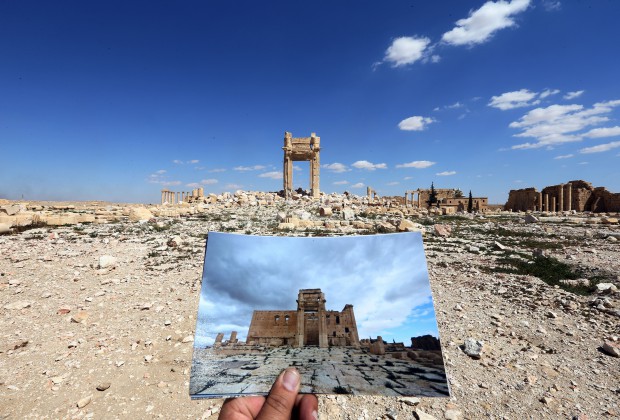Strolling around Tate Modern’s recent Alexander Calder exhibition, something bothered me. Calder is best known for creating mobile, rather than static, sculptures; most of his pieces were intended to move, but some were now sitting lifelessly by the gallery’s white walls.
It’s hard to appreciate how radical Calder’s kinetic art was in its time. Hergé, who owned one of Calder’s sculptures, put it best: ‘I don’t know if you are familiar with his “mobiles”. They consist of elements of light metal, assembled by thin wires. When hung from the ceiling, the slightest draught will make them move. They are graceful, light and extraordinarily poetic.’
They sure are, or were. But here at the Tate, a sign explained that some of the moving parts inside several of Calder’s motorised sculptures – inside, note, and not visible to the gallery-goer – had become too fragile to allow the things to be switched on. The playful planets in his pretendy solar system had stopped orbiting. One jobsworth security guard told me off as I was trying to take a photo of the pieces in question, which is why I can’t remember which ones they were.
Anyway, this seemed to miss the point of Calder’s philosophy. Which would have been more important to him – that his sculptures should be seen in motion as he intended, or that a few screws and bolts should be preserved? Wouldn’t it be better to replace those and let the work live again – or are each of the parts somehow greater than the whole?
In another room in the exhibition – housing ‘Small Sphere and Heavy Sphere’ (1932-33), which I managed to photograph while jobsworth had his back turned – we learned: ‘The red sphere is pushed so that the white sphere arbitrarily knocks against an arrangement of bottles, a box, a can, and a gong on the floor. Calder would allow viewers to organise and reorganise these objects as they wished (for conservation reasons this is no longer possible).’
Of course it’s still possible; it would just mean occasionally replacing one of the bottles or varnishing the box. All of which again raised the question: what is the essence of the artwork? Is it the objects themselves, or the way the artist invited us to interact with them? And is that art best preserved by letting the dust settle on its constituent objects, or by continually regenerating them to allow the artist’s vision to be expressed again and again? My sense was that Calder would furrow his brow at the Tate’s fundamentalism and instead go along with Tennyson:
‘How dull it is to pause, to make an end;
To rust unburnish’d, not to shine in use.’
This all came back to me as I read Stephen Bayley explain why he’s unconvinced by new attempts to recreate the glories of Palmyra, recently destroyed or disfigured by Islamic State, using the latest imaging and printing technologies. He concludes:
‘… patient restoration of Palmyra is as futile as correctly remembering an evaporating dream. Certainly, it’s gratifying to nullify the destructive work of Daesh’s explosives with drones and 3D printing and complex resins, but why confront the ugly lie of Islamic State with a tacky fake? There’s a nobility in ruins that technically perfect copies can never rediscover… The deplorable new ruins add to Palmyra’s meaning, a message written in the sand.’
That description suggests more of a practical than a fundamental objection. Let’s assume those reproductive technologies are now at the standard required to restore the temples of Bel and Baalshamin and the Lion of al-Lāt to how they appeared before IS sacked the city last year. For the casual observer, the reproduction need be neither tacky nor lacking in nobility or meaning. And for the Syrians, perhaps they might hope to restore some sense of continuity without worrying too much about authenticity, which increasingly seems an unwelcome Western fetish; better a fake continuity than letting IS have the last word. I suspect, too, that even Syria’s hipsters aren’t yet quite as turned on by ruin porn as we are.
Here we might learn something from the Wahhabis. Plenty of observers have bewailed the Saudi authorities’ bulldozing of many of Mecca’s and Medina’s earliest buildings, pulled down lest they become shrines in themselves and distract from the core tenets of Islam. But the custodians of the holy mosques understand that Muhammad, like Ben Jonson’s Shakespeare, ‘is not of an age but for all time’.
The same principle holds for Palmyra and its wonders, and for the best art of our own era: to preserve, regenerate. The stones and gongs that make up a temple or a piece of art can change without destroying the ideas they hold up or erasing the history that holds them up. In Palmyra’s case, that history speaks of cosmopolitanism, religious pluralism and world trade; we should make it stand for these things again, before Putin makes it stand for whatever it is he’s after. In that spirit, we should help rebuild the arches and temples of Palmyra if the Syrians wish, and let viewers organise and reorganise Calder’s sculptures if they wish.







Comments